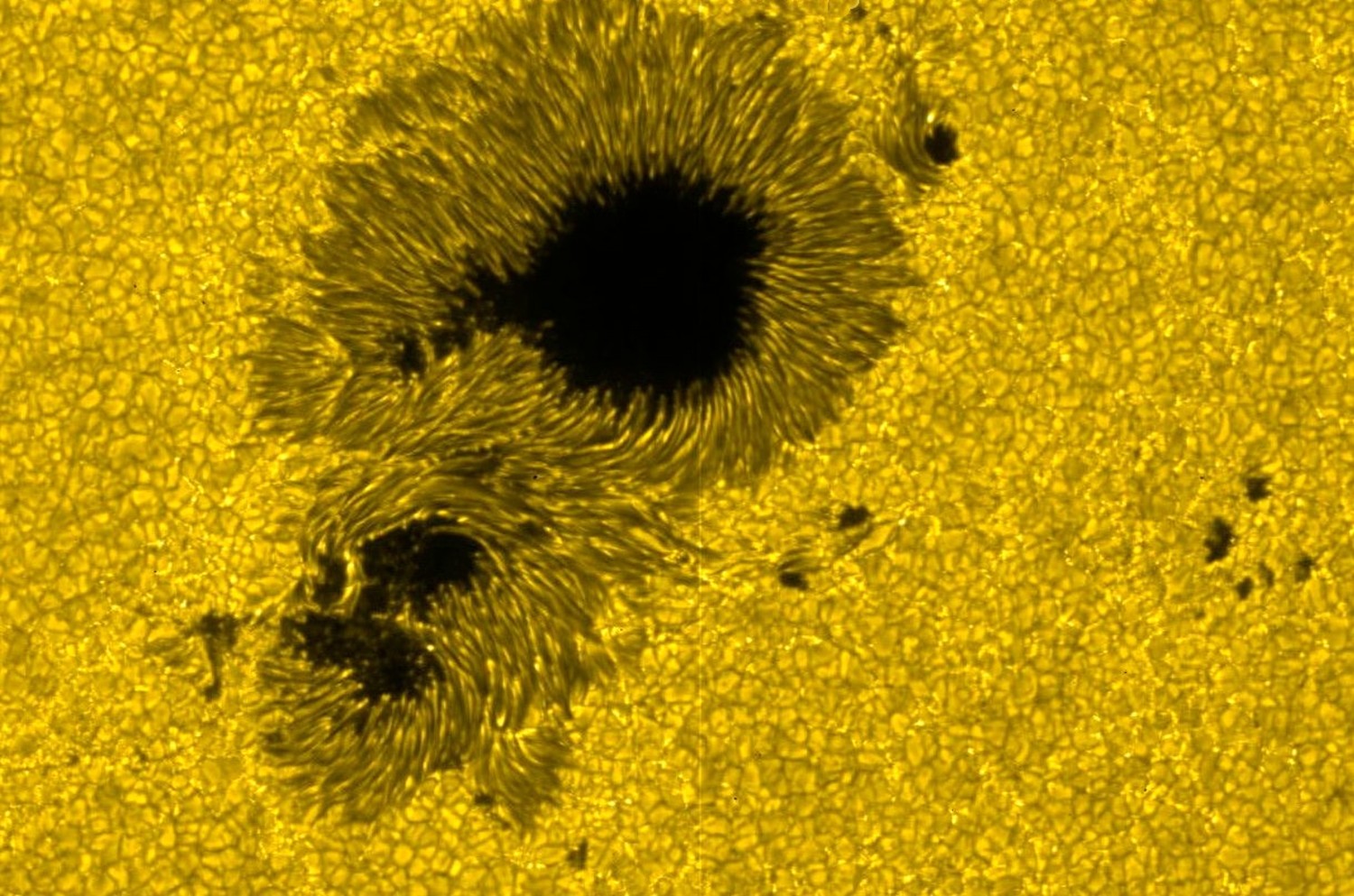The Sun isn't something you look at very often, with good reason as it is so bright, so we normally think of it as a uniform yellowish disk. But actually it is a very dynamic place with incredibly violent weather.

' alt='Granules-like structure of surface of sun and sunspots.' >Intense magnetic storms well up to the surface of the Sun, forming the slightly darker areas that we call sunspots. These would just be an interesting anomoly if it wasn't for the fact that sunspots can develop into solar flares and ultimately coronal mass ejections, huge explosions on the surface of the Sun which hurl high energy particles out into the solar system. If these hit the Earth they can damage satellites, distort the Earth's magnetic field and generate enough current in power systems to melt transformers.
So that we can be prepared for these events, predicting space weather is extremely important. Up until now this has been based monitoring the visible surface of the Sun, but Stathis Ilonidis and collegues at Stanford University have been studying seismic waves on the surface of the Sun - essentially sunquakes.
For obvious reasons, we can't put seismometers on the Sun's surface. Instead, we use special cameras on board the SOHO spacecraft. These cameras are sensitive to the tiny changes in wavelength of the light coming from the solar surface as it is moved up and down by a seismic wave. From these it is possible to build up a picture of a seismic wave travelling across the surface.
Publishing in Science, the researchers report identifying a distinct series of seismic waves that precede the arrival of a sunspot, and these have their centres at the point where the sunspot erupts on the surface. These waves seem to be created about 40-70,000 km below the surface of the Sun. By studying how these waves are moving they are able to predict a sunspot 1-2 days before it actually appears, which could in the future help give sensitive installations more warning of an incoming solar storm.
References
- Previous Why do coffee stains dry to leave a ring?
- Next Diamonds in Flames










Comments
Add a comment